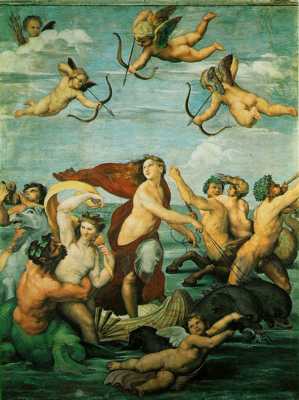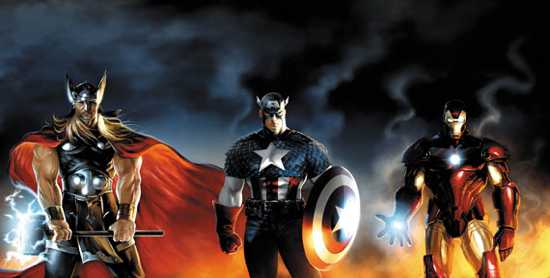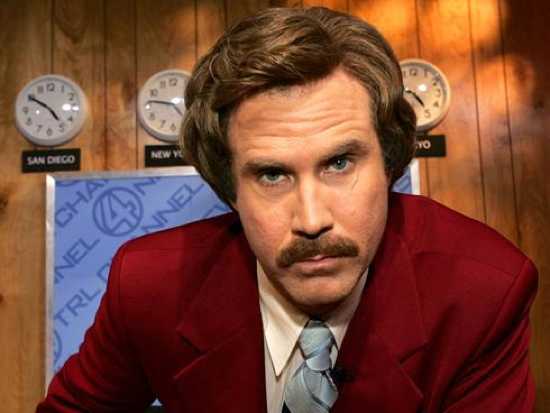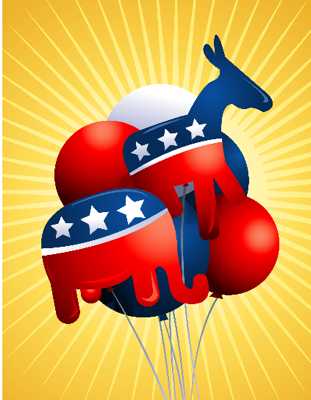Since the completion of the second list, it seemed self-manifest that there should be a third and final installment, to wrap up the loose ends and make it a nice three. I will also, if I may, use this opportunity to invent a new word. It will describe an intense rivalry with three sides: Trivalry. So I hope everyone can enjoy and learn something new from my last list of intense three-way rivalries.
In the professional game of golf there are some big legends: Bobby Jones, Ben Hogan, Arnold Palmer, Jack Nicklaus, and Tiger Woods, to name a few. But the greatest of the greats very seldom ever competed against each other directly while in their primes. To find a truly great golf trivalry, we have to go back to the late-nineteenth/early-twentieth century when Harry Vardon, John Henry Taylor, and James Braid battled each other out on the links. This was known as the “Great Triumvirate” and between 1894 and 1913 they won 16 Open Championships between them, sometimes defeating each other narrowly in these events. (In those days the Open Championship AKA the British Open was the only “major” golf tournament. The U.S. Open paled in comparison in importance and prestige, and The Masters did not exist yet, nor did the PGA Tour.) Vardon, a Jerseyman, defeated Taylor at the Open Championship in a 36-hole playoff in 1896 for his first Open victory and would go on to win a total of six Open titles, a record that still stands to this day. He also won the U.S. Open in 1900, defeating Taylor by 2 strokes. Braid, a Scotsman, won five beginning in 1901, and in addition to his prowess as a golfer was also an excellent course designer. In fact he is often credited with popularizing the dog-leg, where there is no direct line-of-sight from the tee to the green. Taylor, an Englishman, also won five Open Championships and like Braid was also a successful course designer.
In the Italian High Renaissance of the early 16th century, Leonardo da Vinci was the epidemical polymath who excelled in all things science and art. His Mona Lisa and Last Supper are among the very most well-known and analyzed paintings in history. Michelangelo, who was much younger than Leonardo and who by comparison could be seen as an upstart, was a genius in his own right who famously painted the ceiling of the Sistine Chapel (not without controversy), but who specialized in sculpture and dabbled in public architecture. Nevertheless, and unfortunately, these two great contemporary minds despised each other, for reasons only fully understood by art history majors. Like Michelangelo to Leonardo, Raphael hit the scene as a fresh new talent competing for lucrative commissions from the elites of Florence and Rome. Heavy influences from both Leonardo and Michelangelo are apparent in Raphael’s work, but primarily from Leonardo, thus ensuring Michelangelo’s hatred of both men all the more. During his lifetime, however, Raphael probably became more valued and revered than either of his forerunners, which is really saying something given how much Michelangelo (“The Divine”) was beloved. It wasn’t until much later that Raphael occupied a position a little bit below the other two men in historical esteem. For those of you who are wondering, Donatello was a sculptor from a somewhat earlier period, and a fine talent for sure, but he simply doesn’t belong in the same category as the other three in terms of artistic influence or scope of work. And speaking of painting, a minor three-way rivalry exists today between the proponents of oil, acrylic, and watercolor.
The Battle at Kruger is the name of a roughly 8-minute YouTube video from 2007 that depicts a fight between a herd of buffalo, a pack of lions, and a crocodile in a Wildlife park in Africa. In the video, which was captured by a tourist with a camcorder, the animals are fighting over a baby buffalo. The lions and the crocodile obviously want to eat it, and the adult buffaloes attempt to rescue it. With several million views the video was certified viral and it won the YouTube Video Award for Best Eyewitness Video. Beyond that, you just have to see it for yourself.
My first list of three-way rivalries included match ups of American college football teams (Florida, Florida State, and Miami) and European football-soccer club teams (AC Milan, Inter Milan, and Juventus). Based on suggestions I received on that list, it was decided that a third rivalry deserved a mention, from the world’s other great football sport: Rugby. The trivially between the Springboks of South Africa, the All Blacks of New Zealand, and the Wallabies of Australia is a spirited clash between the three colonially-British nations of the southern hemisphere. These rivals compete annually in the Tri Nations, and at the moment this list was conceived, were ranked #1, #2, and #3 globally by the IRB. The Springboks last won the Rugby World Cup in 2007, but as defending champions were eliminated by Australia in the 2011 tournament. They also famously won the Cup in 1995, in a tournament they hosted and in which they participated for the first time, having missed the first two Rugby World Cups for political reasons. In that contest, they defeated Australia in the Group Stage and New Zealand in the Final. This was the subject of the movie Invictus starring Morgan Freeman as Nelson Mandela. Australia is the current champion (last played in 2011) of the Tri Nations championship, as well as the holders of the Mandela Challenge Plate trophy, which they have competed for against South Africa since 2000. New Zealand, however, is the current champion of the RWC, who as host defeated Australia in the semi-final in October 2011. New Zealand also has fared well in the Tri Nations championship, winning it 10 times in its 16-year existence.
Nothing can compare to the historical enmity between the big three monotheistic religions of Christianity, Judaism, and Islam. Of course, there are major schisms within these. Islam has its Sunni and Shia. Christianity has its Roman Catholics, Eastern Orthodox, and Protestants, and even Protestantism has its Lutherans, Methodists, Baptists, etc. To find a really solid three-way rivalry, however, look no further than the 19th-century “cult” movements of Mormonism (Latter-Day Saints), Jehovah’s Witnesses, and Seventh-Day Adventism. Given the fact that all three are prone to fairly vigorous tract efforts, this trivalry plays out in scriptural debate on front porches and public corners across the globe. From a theological perspective what’s most fascinating is how much their beliefs have in common, even while they appear to diverge so strenuously. For example, Jehovah’s witnesses believe that in the afterlife good and virtuous people (basically them) will live in a terrestrial paradise but not in the presence of God. Mormons on the other hand believe that they will live in a celestial paradise in the presence God, but that the iniquitous (basically, everybody but them) will live outside the presence of God in a terrestrial paradise. So either way, the fate of the Mormons remains the same.
During the French Wars of Religion (which, to review, were a series of bloody conflicts in late 16th century reformation France) three separate coalitions formed, all lead by a man named Henry. Hence the name War of the Three Henrys. The three Henrys were as follows: Henry III, King of France, who lead the Royalists; Henry the King of Navarre, who lead the protestant Huguenots with Scottish allies; and Henry I, Duke of Guise who lead the Catholic League with Spanish allies. The history can get complicated, but it’s always safe to assume that the struggle was essentially over the control of wealth. By the time the dust had settled, Henry I had been murdered by Henry III’s guards and Henry of Navarre had become Henry IV of France. Amusingly, this is not the only thing in history with that name. Another war, called the War of the Three Henries (spelled differently) occurred during the middle ages somewhere in or around Bavaria. Two dukes and a bishop (named Henry) revolted against the Holy Roman Emperor Otto II. The revolt was quickly squashed.
In the 2012 Marvel movie The Avengers, three very powerful individuals get tangled up in an epic clash of the egos. It’s the scene in the airplane/mountains and the three participants are Thor, Captain America, and Iron Man. As the fight progresses, like all good fights, it’s difficult to assess who will come out on top, and even though this outburst was short-lived and highly fictional it’s noteworthy on the intensity factor alone. Thor is a hammer-wielding Norse demigod, Captain America is a justice-wielding, justice-defending super-soldier with a shield of indestructibility, and Iron Man is a playboy billionaire that follows his own set of rules. Intense indeed.
The natural world is full of three-way rivalries that dictate the proper concert of the universe. Yet unlike the other items on this list, these rivalries are showcased in much subtler, more ever-present ways that we don’t always think about. They oppose against each other not to emerge triumphant, but to achieve a cohesive balance. Take for example the three known fundamental forces: Gravity (the attraction between masses), Electromagnetism (the interaction between particles), and Nuclear Force (the interaction between the internal parts of an atom). Not even a star could shine without all three of these powers working in harmony. Or consider the three forces acting on an object at rest on an inclined plane: Vertical Gravity (pulling the object directly down), Normal Force (exerted on the object by the slope, perpendicular to the slope), and Frictional Force (pulling on the object parallel to the slope). Author’s note: I will openly admit that physics is not my strong suit, in fact it was the only class I ever got an F in. So please forgive my simplifications and feel free to use the comments to add or correct anything if you are disposed to do that sort of thing.
This entry is mostly self-explanatory, but in a free and open society (which not all are) the effort to became the community’s #1 news source might actually be Darwinism at its finest. This was illustrated to a hilariously violent degree in a scene from the 2004 Will Ferrell movie Anchorman: The Legend of Ron Burgundy, when things, as he says, “escalate quickly.” As with the Renaissance painters, the benefit of the rivalry gets passed on to the rest of us, in terms of integrity and trust they must maintain, but also usually with the weather girl’s cleavage.
The United States government was built on the premise of separation of powers. Notwithstanding, there has always been plenty of power up for grabs and the history of American politics is utterly rife with rivalries, and trivalries, among ambitious individuals, especially when it comes to the contest for the highest office in the land. Given the way the Constitution is written, the most natural of occurrences is for two political parties to form and dominate any election, which is the case today (discounting the Tea Party). Three notable exceptions to this rule are 1856, 1912, and 1948. These, I thought, were worth a brief examination. In 1856, James Buchanan of the Democratic Party defeated John C. Fremont of the Republic Party and former president Millard Fillmore, who represented the Know Nothing Party at the time but who had served as president as a Whig. Buchanan is often designated as one of the worst presidents in American history (Listverse has him at #2). His administration saw the secession of South Carolina from the Union and consequently the beginning of the American Civil War. Luckily Abraham Lincoln, unwaveringly listed as the #1 greatest U.S. president, won in 1860, in a contest that was actually split four-ways. In 1912, Woodrow Wilson, a Democrat, defeated incumbent William Taft, a Republican, and another former president, Theodore Roosevelt of the Progressive or “Bull Moose” Party. In 1948, incumbent Harry Truman defeated Thomas Dewey and Strom Thurmond in what is generally regarded as the biggest surprise victory in U.S. election history because Strom Thurmond ran as a member of the “States’ Rights Democratic Party” or “Dixiecrats,” which according to common sense would have split Truman’s vote in half. Also, Truman wasn’t that popular. The most recent examples of substantial third-party involvement in U.S. presidential elections were probably 1992, when independent Ross Perot won 19% of the popular vote (a strong showing but not enough to earn him any electoral votes, what really matters) and 2000 with Ralph Nader of the Green Party who, despite earning less than 3% of the national vote in all likelihood determined the election’s outcome. In Florida, Nader received 97,488 votes – the majority of which would have almost indisputably gone to Al Gore otherwise. By final count George W. Bush carried the state by a margin of only 537 votes (less than 1% of 1%) and received the state’s 25 electoral votes needed to give him the White House. Since then, third party candidates have really fallen out of style.






















